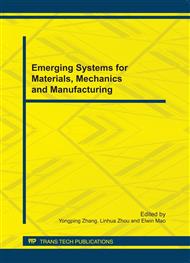p.462
p.466
p.471
p.476
p.480
p.485
p.489
p.494
p.499
Numerical Simulation Analysis of High-Voltage Transmission Tower
Abstract:
With the rapid development of Chinese economy construction, hv transmission line has become the main channel for long-distance power transmission and also the most basic conveyance systems and infrastructure for industrial and mining enterprises. The major coal mine fields in China have hv transmission lines passing above. Coal mining subsidence has an important influence on the line tower. So it is important to study the High-voltage transmission line tower to ensure its safety. In this paper, the model is a High-voltage transmission tower. The mechanical analyses for the tower under different boundary conditions are made by finite element simulation. The results can be used as reference for the design of high-voltage transmission line tower in mining area.
Info:
Periodical:
Pages:
480-484
Citation:
Online since:
October 2011
Authors:
Keywords:
Price:
Сopyright:
© 2012 Trans Tech Publications Ltd. All Rights Reserved
Share:
Citation:


